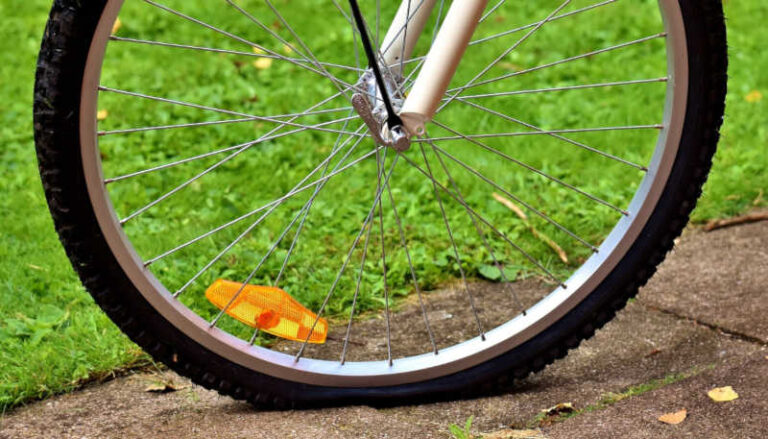The Ultimate Guide to Using Handlebar Mitts (Pogies) for Winter Riding

Intro
Winter riding and commuting – where the brave dare to pedal through the icy streets while everyone else hibernates in their cozy cars. If you’ve ever found yourself considering a two-wheeled adventure in sub-zero temperatures, you know it’s not just about slapping on an extra layer and calling it a day. Oh no, winter riding is an entirely different beast. Imagine your morning commute turning into a scene from “The Revenant,” minus the bear attack (hopefully).
First off, there’s the cold. It’s not just “grab a scarf” cold. It’s the kind of cold that turns your breath into icicles and makes your nose feel like it’s about to fall off. Then there’s the snow and ice – Mother Nature’s way of adding a little slip-and-slide excitement to your daily ride. Potholes you avoided all summer? Now they’re hidden under a treacherous blanket of snow, just waiting to catch your wheel. And let’s not forget the wind, which seems to have a personal vendetta against cyclists, blowing straight into your face no matter which direction you’re going. But fear not, intrepid rider! With the right gear, like handlebar mitts (or pogies), you can turn this frosty challenge into a ride in the park…well, a very cold park.
Handlebar mitts, also known as pogies, are a game-changer for cyclists braving cold weather. These nifty accessories attach directly to your handlebars, creating a cozy cocoon for your hands. Unlike traditional gloves, pogies shield your hands from wind, rain, and snow, providing an insulated barrier that keeps the chill at bay. They allow you to maintain full control and dexterity, making gear shifts and brake pulls effortless even when the temperature drops. Whether you’re commuting to work or embarking on a winter trail adventure, handlebar mitts ensure your hands stay toasty warm, letting you focus on the ride instead of the cold. They are typically made from durable, insulating materials like neoprene, fleece, or synthetic fabrics that provide excellent thermal retention and weather resistance.
Who Thought of These Things?
The history and evolution of bar mitts, reflect the ongoing quest for comfort and functionality in the challenging conditions of winter cycling. These ingenious accessories have evolved significantly from their humble beginnings, adapting to the needs of cyclists across various disciplines and climates.
Early Beginnings
The concept of handlebar mitts can be traced back to cold-weather environments where people needed to protect their hands while maintaining dexterity. In the early days, rudimentary versions of handlebar mitts were likely crafted from basic materials like leather and wool. These early mitts were simple covers that shielded hands from the cold wind and precipitation for various other activities like rowing, motorcycling, etc.
Development in Motorcycling
The evolution of handlebar mitts gained momentum in the mid-20th century with their use in motorcycling. Motorcyclists needed reliable protection for their hands during winter rides, leading to the creation of more robust and durable handlebar covers. These early motorcycling mitts were often made from heavy-duty materials like leather, sometimes lined with fleece or other insulating fabrics for added warmth.
Adoption by Cyclists
As the popularity of cycling grew, especially in regions with harsh winters, cyclists began to adopt the idea of handlebar mitts. In the 1980s and 1990s, innovative cyclists started to adapt motorcycling mitts for their bicycles. The need for specialized gear led to the development of handlebar mitts specifically designed for bicycles, considering the unique ergonomics and requirements of cycling.
Technological Advancements
With advancements in materials and manufacturing techniques, modern handlebar mitts have become highly effective and user-friendly. Key developments include:

- Materials: The use of neoprene, a flexible and insulating material, revolutionized handlebar mitts. Neoprene offered excellent thermal retention, water resistance, and durability. Synthetic fabrics like nylon (pictured here) and polyester, often treated with waterproof coatings, also became popular choices.
- Design Improvements: Modern handlebar mitts are designed with user convenience in mind. Features such as Velcro straps, zippers, and drawstrings ensure a secure fit and easy installation. Enhanced designs provide better access to brake levers and gear shifters, maintaining control and safety.
Specialization: Handlebar mitts have evolved to cater to different cycling disciplines. Whether for commuting, mountain biking, or fat biking in extreme conditions, there are specialized mitts designed to meet the specific needs of each type of cycling.
Popularity and Mainstream Use
In recent years, handlebar mitts have gained mainstream popularity among cyclists. Brands dedicated to cycling accessories have embraced the demand, producing high-quality handlebar mitts that offer exceptional performance. Cyclists now have access to a wide range of options, ensuring that they can ride comfortably in even the harshest winter conditions.
What Are They Made Out Of?
- Neoprene: Often used for its waterproof properties and ability to retain heat, neoprene handlebar mitts are ideal for wet and cold conditions. They offer a snug fit and excellent insulation.
- Fleece-lined: These mitts combine a durable outer layer with a soft, warm fleece interior. The fleece lining enhances comfort and warmth, making them perfect for extremely cold weather.
- Synthetic Fabrics: High-performance synthetic materials like nylon or polyester are also common. These fabrics are often treated with water-resistant coatings to keep hands dry and warm.
Are They Easy to Use?
Installing handlebar mitts is straightforward and can be done in a few simple steps:
- Open the Mitts: Most handlebar mitts have an open design at the handlebar end, allowing easy access to slide them onto the handlebars.
- Slide onto Handlebars: Slip each mitt over the respective handlebar, ensuring that the openings align with the grips, brake levers, and gear shifters.
- Secure in Place: Many mitts come with Velcro straps, zippers, or drawstrings to secure them around the handlebar stem and grips. Adjust these fasteners to ensure a snug fit, which prevents cold air from entering.
- Adjust for Control: Make sure the mitts are positioned so you can easily reach and operate the brake levers and gear shifters inside the mitts.
Removing handlebar mitts is just as easy:
- Undo Fasteners: Release any Velcro straps, zippers, or drawstrings securing the mitts to the handlebars.
- Slide Off: Gently pull the mitts off the handlebars, starting from the grip end and moving towards the stem.
- Store: Fold and store the mitts in a dry place to keep them in good condition for the next ride.
They Sound Awesome. However, Do They Even Work?
Pogies work wonders for keeping your hands warm during cold weather cycling. These clever accessories create an enclosed, insulated space around your handlebars, shielding your hands from the elements. Unlike traditional gloves or mittens, handlebar mitts attach directly to your bike, providing a barrier against wind, rain, and snow. The design ensures that your hands remain in a warm micro-environment, even as you navigate through icy winds and freezing temperatures. The key benefit being this setup allows you to maintain dexterity and control without the bulkiness that often comes with heavy winter gloves.
Other advantages of using bar mitts over traditional gloves or mittens are substantial. Firstly, handlebar mitts offer superior warmth because they insulate your hands while also allowing you to wear lighter gloves inside. This layered approach traps heat more effectively than a single pair of gloves. Secondly, handlebar mitts provide better wind protection since they cover your hands completely, preventing cold air from seeping in. Traditional gloves or mittens often leave gaps around the wrist area, which can let in cold air and diminish warmth. And lastly, (as mentioned above) handlebar mitts allow for better control and maneuverability. With your hands inside the mitts, you can easily access brake levers and gear shifters, e-bike controls without the restriction that bulky gloves can impose. This means safer and more responsive handling, crucial for winter cycling conditions.
Safety
Using handlebar mitts can feel like slipping your hands into two cozy, weatherproof cocoons. However, before you ride off into the winter wonderland, it’s crucial to ensure safety while enjoying those toasty digits. Though they are generally easy and safe to use there are a couple of things to consider. Make sure your mitts are properly secured to your handlebars and fitted properly. A loose mitt flapping in the wind or hindering a brake lever is not just annoying; it’s a recipe for an unintended magic trick—think “watch me crash as I struggle to regain control of my bike!”
Another safety tip is to practice using your brake levers and gear shifters with the mitts on before you head out to the trails or streets of your city. You don’t want to discover mid-ride that you’ve accidentally turned your bike into a one-speed machine because you can’t shift gears. Take a few practice runs in a safe area to get the feel of reaching for your bikes controls. Experiment removing your hands from the mitts and inserting them back in. If you can’t get your hands back in easily consider widening the opening (if your mitts have that feature) or wearing a more streamlined thinner glove to allow easy insertion and removal.
When to Use Pogies, When to Use Normal Mittens or Gloves
When it comes to keeping your hands warm while cycling in cold weather, both traditional gloves or mittens and handlebar mitts (pogies) have their merits. However, they serve different purposes and excel in different conditions.
Traditional Gloves or Mittens
Pros:
- Ease of Use: They are easy to put on and take off quickly, which can be convenient for short rides or quick stops. I like to leave my pogies on all winter so this is not really an advantage for me.
- Variety: Available in a wide range of materials and thicknesses, allowing for customization based on specific temperature needs and personal preference. Also good if you need your hands to be warm after you stop riding (i.e. you ride in the mountains to a destination and then go for a hike)
Cons:
- Dexterity Issues: Bulky winter gloves can reduce your ability to feel and manipulate brake levers and gear shifters effectively.
- Limited Warmth: Even the best gloves can struggle to keep hands warm in extreme cold, especially when wind chill becomes a factor.
Handlebar Mitts (Pogies)
Pros:
- Superior Insulation: Pogies create an insulated barrier around your hands, trapping heat and blocking out cold air far more effectively than gloves alone.
- Enhanced Control: Because you can wear thinner gloves inside pogies, you maintain better dexterity and control over your bike’s brakes and gears.
- Convenience: Once installed, they can remain on your bike, so you don’t have to worry about putting on or taking off gloves during your ride.
Cons:
- Specialized Use: Pogies are specifically designed for cycling, limiting their use to this activity.
- Installation Time: They require some initial setup and adjustment, which can be a bit cumbersome if you frequently switch bikes or handlebars.
Situational Recommendations
When to Use Gloves/Mittens:
- Short Rides or Commutes: For quick trips where you’re in and out in a matter of minutes, gloves or mittens are often more convenient if you do not leave you bar mitts on your bike.
- Mild Cold: On days when the temperature is chilly but not freezing, a good pair of insulated gloves might be all you need.
- Multi-Activity Use: If you’re engaging in various outdoor activities, gloves offer the flexibility you need.
When to Use Pogies:
- Extended Rides: For long winter rides or commutes, especially in harsh conditions, pogies provide superior warmth and comfort.
- Extreme Cold: When temperatures drop significantly, pogies offer the best protection against the elements, keeping your hands warm and functional. Pro Tip -> Consider bringing a warm extra pair of regular gloves along if you plan on riding to a location where you will partake in outdoor activities in the cold.
- Technical Terrain: In situations where precise control of your bike is crucial, such as mountain biking or navigating icy roads, pogies allow for better dexterity compared to bulky gloves.
- Quick Short Rides: If you leave your pogies on your bike and it’s not too too cold out you can easily not wear any gloves at all making it easy for say, a short trip to 7-Eleven for a Slurpee??
Popular and Reputable Brands for Handlebar Mitts/Pogies
Here are some of the top brands known for their high-quality handlebar mitts, along with a brief overview of each and their standout products.
Bar Mitts
Overview: Bar Mitts is a leading brand specializing in handlebar mitts for cyclists. They offer a variety of mitts designed for different types of handlebars and weather conditions.
Standout Products:
- Bar Mitts for Flat Bars: Designed for mountain bikes and commuter bikes.
- Bar Mitts for Drop Bars: Suitable for road bikes and cyclocross bikes.
- Extreme Cold Weather Mitts: Extra insulation for harsh winter conditions.
45NRTH
Overview: 45NRTH is renowned for its innovative winter cycling gear. They offer a range of products designed to enhance cold-weather cycling, including high-performance bar mitts.
Standout Products:
- Cobrafist Pogies: High-performance pogies for flat bars, featuring multiple ventilation options and a removable inner cuff.
- Draugenklaw Pogies: Lighter-weight pogies for milder conditions.
Revelate Designs
Overview: Revelate Designs is known for its durable and functional bikepacking gear. Their pogies are designed to withstand extreme conditions and provide maximum comfort.
Standout Products:
- Williwaw Pogies: Versatile pogies suitable for various handlebar types, known for their durable construction and ease of use.
Moose Mitts
Overview: Moose Mitts is a dedicated brand focusing on creating high-quality bar mitts for different cycling disciplines. They are known for their attention to detail and user-friendly designs.
Standout Products:
- Original Moose Mitts: Designed for flat bars, offering excellent insulation and coverage.
- Moose Mitts for Drop Bars: Tailored for road bikes with easy access to brakes and shifters.
TL;DR
Winter cycling can be challenging, but with the right gear, it becomes an enjoyable and rewarding experience. Handlebar mitts are a simple yet effective solution to keep your hands warm and protected, allowing you to focus on the ride rather than the cold. Whether you’re commuting to work or enjoying a leisurely winter ride, handlebar mitts can significantly enhance your comfort and safety.
While handlebar mitts provide significant warmth and protection, wearing a thin pair of gloves underneath can offer additional insulation and comfort, especially in extremely cold conditions.
Ready to improve your winter riding experience? Check out some of the top brands and their offerings:
Happy cold weather riding!

by: Blair Fontana
A versatile freelance content creator known for her engaging writing style and diverse range of interests. Blair has carved out a niche in lifestyle writing, captivating her audience with insightful articles… read more






